Product Roadmaps
Inspired by Gerard Chiva in his book Product Roadmapping
- Roadmap as interface between Product Strategy and execution.
- It is based on business outcomes (and not on outputs).
Getting started with roadmaps
1) Evaluate current situation 2) Understand stakeholders 3) Decide implementation strategy 4) Get everyone on board 5) Validate a solution 6) Implement MVP 7) Improve
Purpose for a Product Roadmap
3 Key Purposes
- Know and be able to explain how you are planning to realise your product vision
- be able to demonstrate you are working on the highest business value items
- to support times when we need to make time-based commitments
Further purpose argumentation
-
Show Product Strategy to stakeholders in a compelling way so that stakeholders can make relevant decisions.
- demonstrate that you are working on the highest business value items
- Connects product strategy and objectives with delivery in an agile way
- It is a plan for the product strategy for how to realize the product vision
- The product roadmap it the meeting point between strategy and execution. And should be considered as the single source of truth.
- is a strategic communication tool and a statement of intent and direction
- a product roadmap translates strategic decisions into actionable plans that provide direction
- Get stakeholders in alignment and facilitate discussion of options
- Communicate progress and status of product development
- it details the journey one wants to take the product on
What a product roadmap should not be
- a release or project plan
- a product backlog
- a gantt chart
- a set of features organized in a timeline
The biggest pitfall for timeline-based roadmaps is the focus on deadlines and outputs rather than strategic priorities and business outcomes.
Product Roadmap vs. Product Backlog
The roadmap is a strategic tool that describes how the product is likely to grow as goals are achieved. Communicates the big picture, the strategic initiatives that move the needle.
The backlog is a tactical tool that describes the details that must be implemented. To organise product delivery and provide visibility around dates. It is too detailed to offer a clear, longer-term view. Should contain only items for the next 3 months.
A possible structure:
- Objectives and themes in the product roadmap
- Epics (or Opportunities) embedded in a roadmap theme that are linked to Epics and user stories in the product backlog (bi-directional linked)
Combination with Product Discovery

Strategic themes
Represent the main strategic guidelines. E.g. about developing new capabilities, entering a new market,…
Outcome based roadmaps
Focussed on outcomes, such as: acquiring customers, increasing engagement,… Features still exists but they are components of roadmap items.
Best used for products in highly dynamic markets, in discovery and growth stages.
 Source 1
Source 1
vs. output based roadmaps
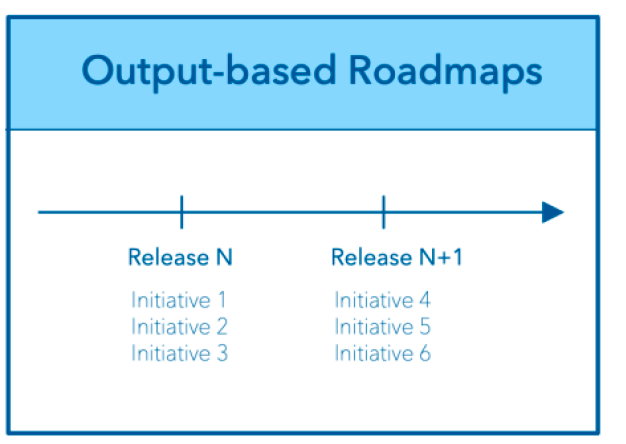
Themes as building blocks of a roadmap
- Are the building blocks which connect strategy and execution. So they for the moving parts in a product roadmap.
- Are initiative summaries.
- Should include a briefing that details the fundamental aspects of the initiative. Cover the problem to be solved, ways to measure success and define scope.
- Consist of
- theme name e.g. Provide real-time personalised recommendations or Inspire weekend flyers
- release date/timeframe
- product goal(s) - states the benefits it should provide and metrics. Can be done using OKRs
- Solutions - proposed high level solutions
- Briefing - one pager acting as a summary of the initiative (this can be a confluence page)
- justify investment of time, resources, people and explains potential, resources needed and key assumptions to be tested
- Ensure they are product capabilities or statements of direction … e.g. evaluate the food consumed in a healthy-eating app.
- A group of epics
- A theme exists to meet a goal and generate a benefit. They connect product goals with concrete solutions.
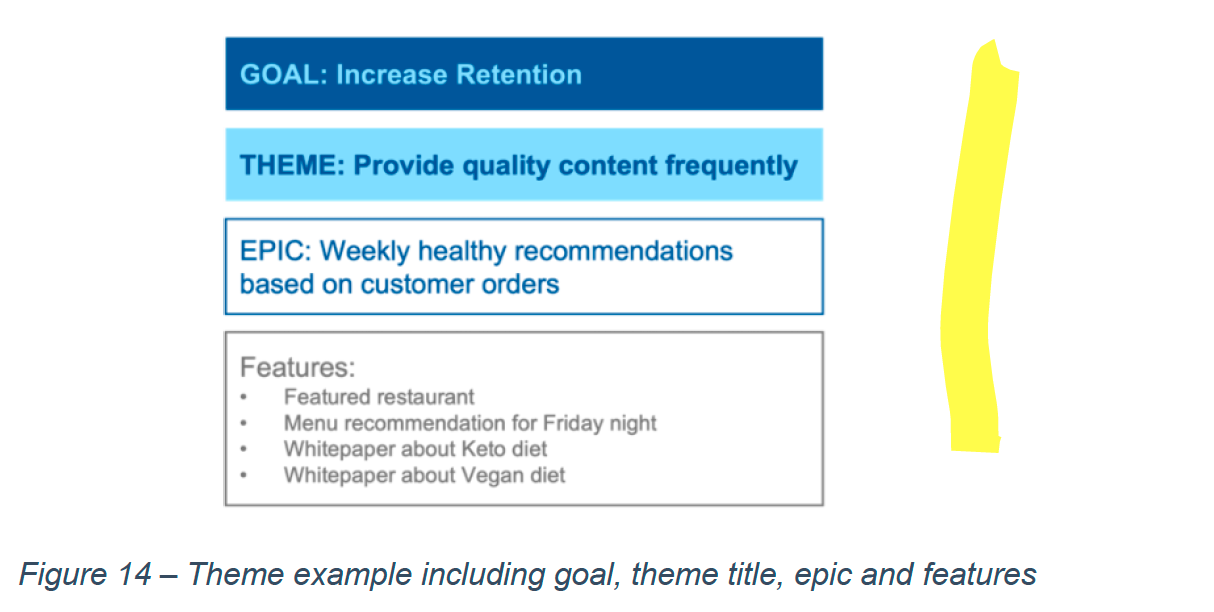
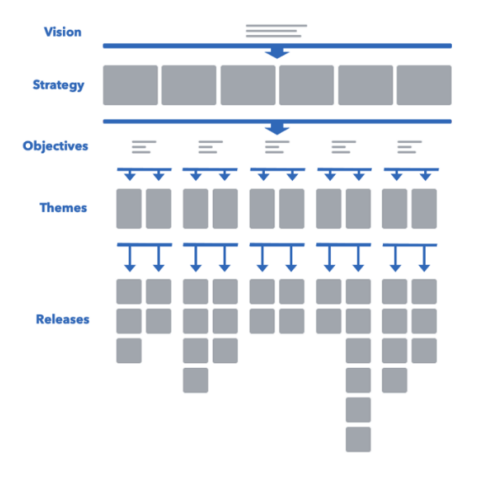 Source 2
Source 2
About Business strategy and product strategy
Business Strategy
Determines how the organization will succeed and it is the responsibility of the executive team
- How to create value for customer, employees and shareholders.
- Provides the basis for making the right investment decisions.
Product Strategy
Determines how the product will be successful and is the responsibility of the product manager. Context is provided by the business strategy (e.g the markets to serve and strategic objectives to meet).
Based on:
- Where to play - What customers to target?
- How to win - What value proposition and business proposition?
 source 3
source 3
Elements of a product strategy
- Challenges - what challenges, problems, or obstacles are we facing?
- Market - Where will you play? Who are the target customers? Distribution channels?
- Win - How are you going to win? What is the competitive advantage? (Costs, pricing, differentiation (higher value products+services), specialization)
- Capabilities - What capabilities should we have?
- Activities - What management systems are necessary?
Requirements for roadmaps
- easy to rewrite a roadmap when it needs to adapt to change
- flexible and lightweight that allows us to always know what is being done, what is intended to be done and why
- provide relevant information to stakeholders to make decisions efficiently
Some roadmap examples
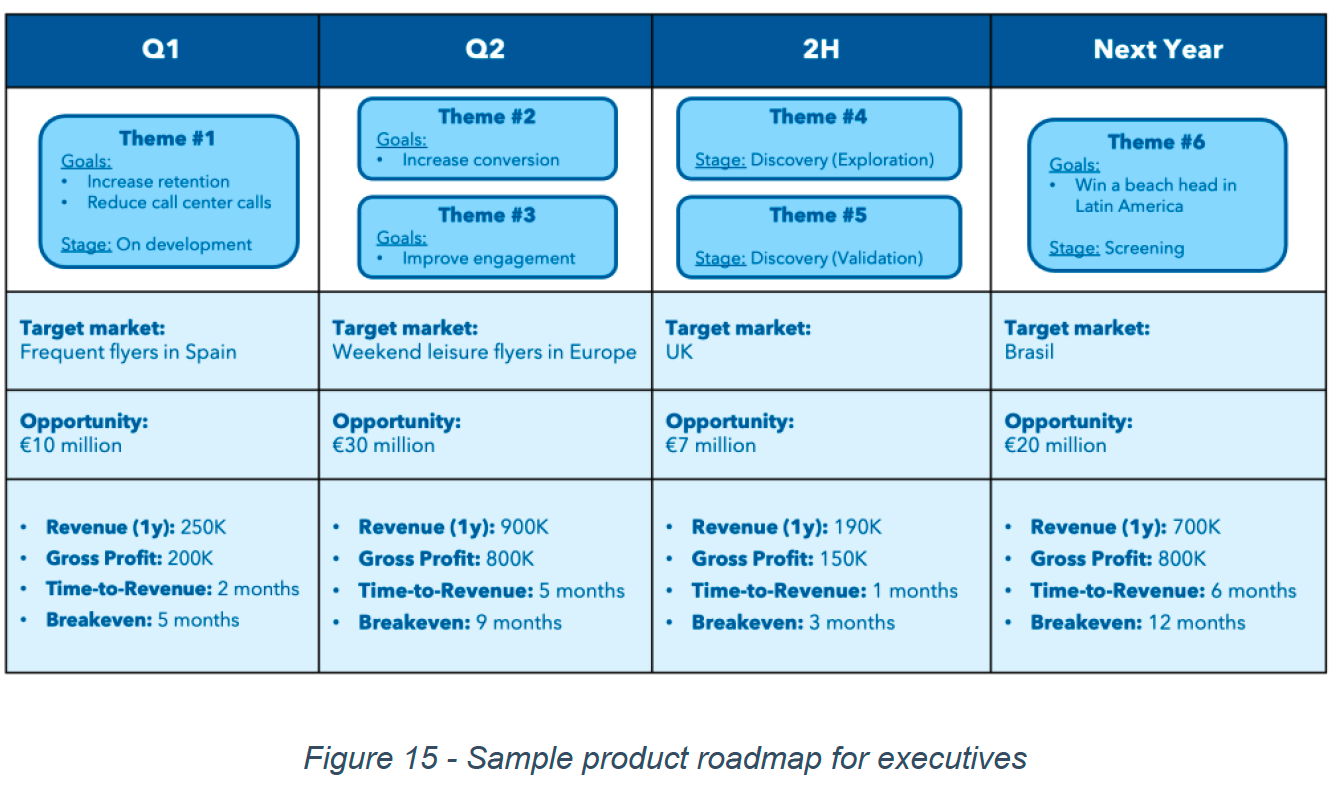
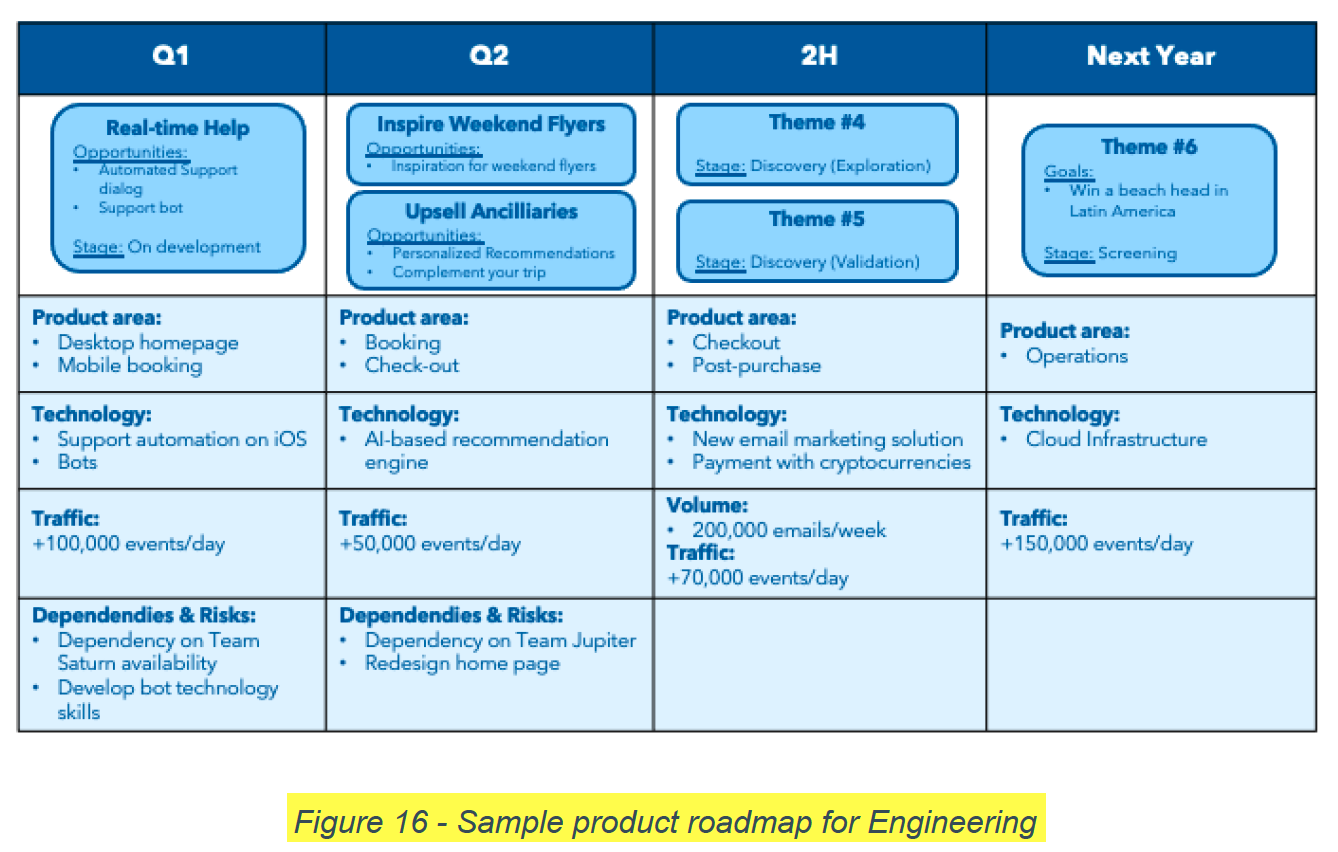 stages
stages

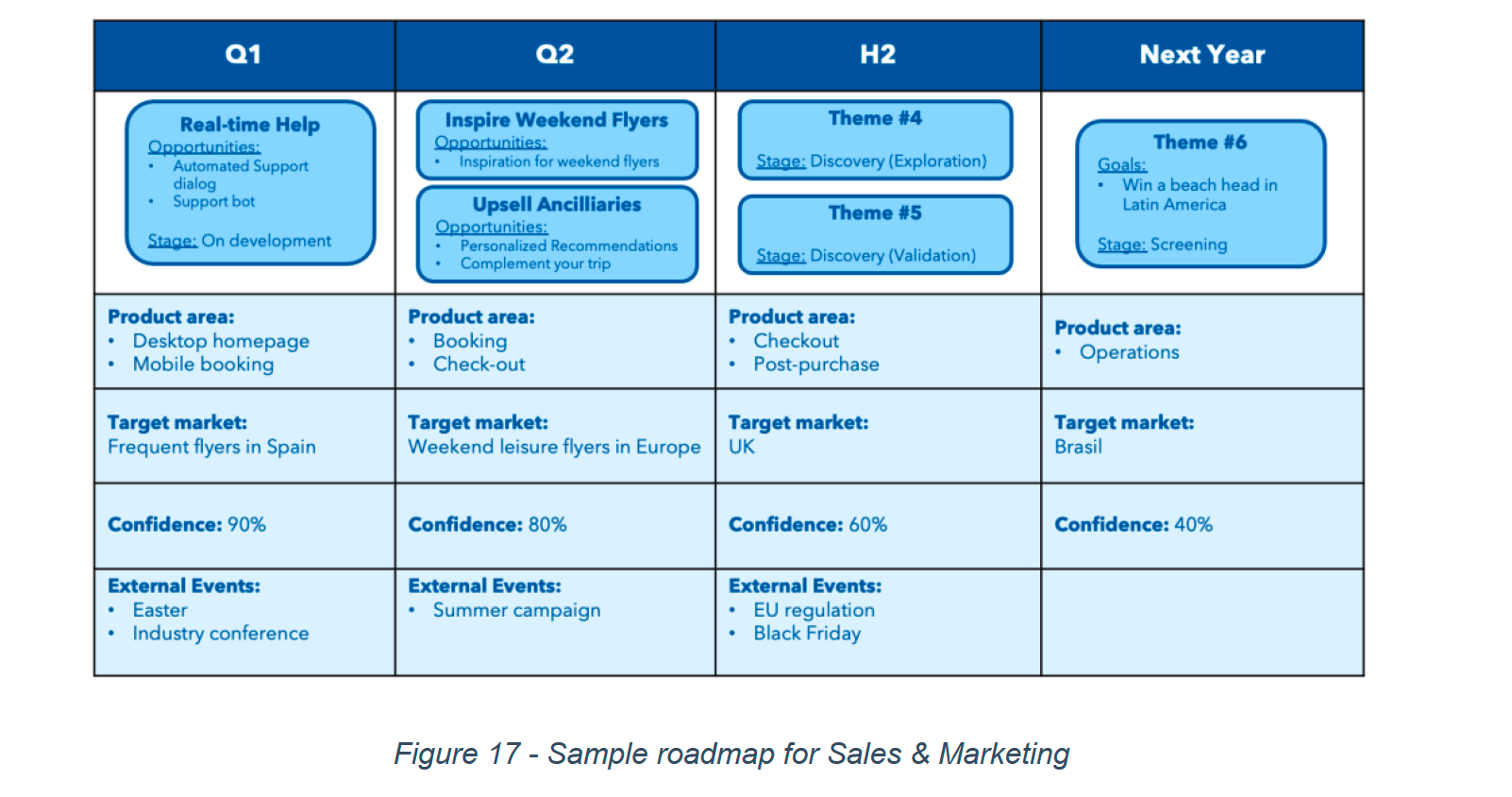
Designing roadmaps
- Ensure that the organisation has a shared understanding of what a roadmap means and how it is supposed to be used
- Should be a collaborative effort including key users
Helpful questions to access when designing a roadmap
- How far into the future?
- Who needs access?
- What could somebody expect for an initiative on the roadmap 3 months/9 months from now?
- How often reviewed? By whom?
- How are changes communicated? By whom?
- How do we know that the roadmap is effective?
- What are criteria for items to be added to the roadmap? What is visualised and what not?
Fundamental aspects
- time frames
- Now-Next-Later
- 3m - 6m - 9m
- Q1, Q2, H2, next year
- level of uncertainty
- display detail
- connection/relationship with product backlog
- information needs of stakeholders

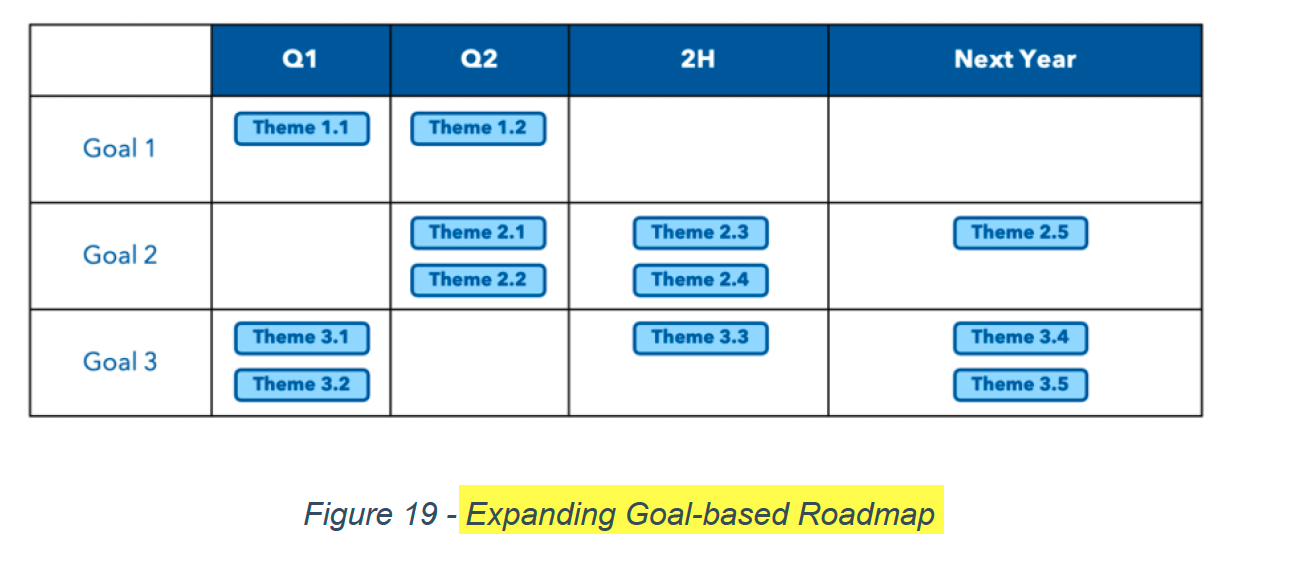

Granularity and uncertainty
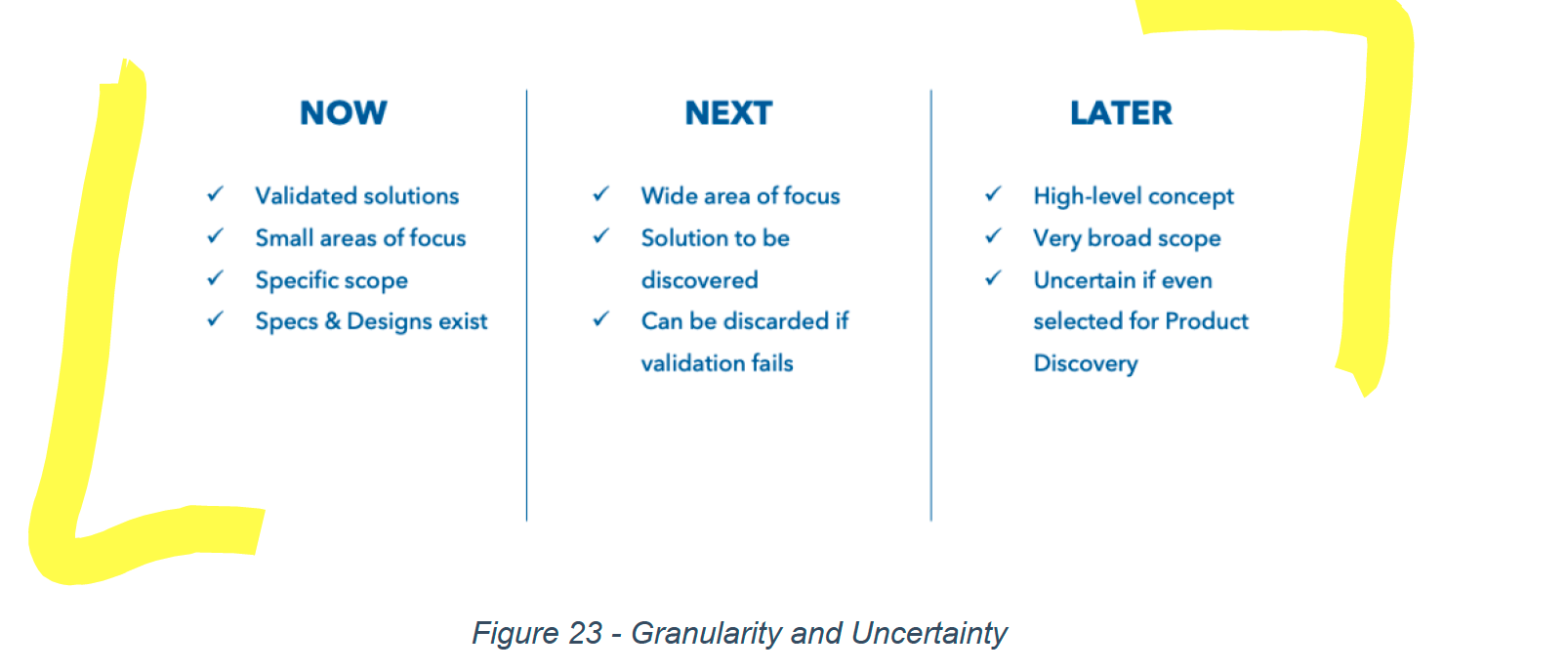
Roadmapping process
- keep parking lots for ideas, themes and suggestions
- Implement a screening to take decisions to include an item in the roadmap
- provide a template for ideas
- idea, by, for which customers, impact expected for customer and for business, how to measure success
- be clear when/where/how to involve stakeholders
Reviews
- changes in product strategy
- progress
- changes in metrics
- stakeholders involved
- data from customers
- product discovery insights
Metrics with Roadmaps
Process metrics allow us to evaluate the performance of the discovery engine, the governance metrics allow us to evaluate its efficacy
Process Metrics
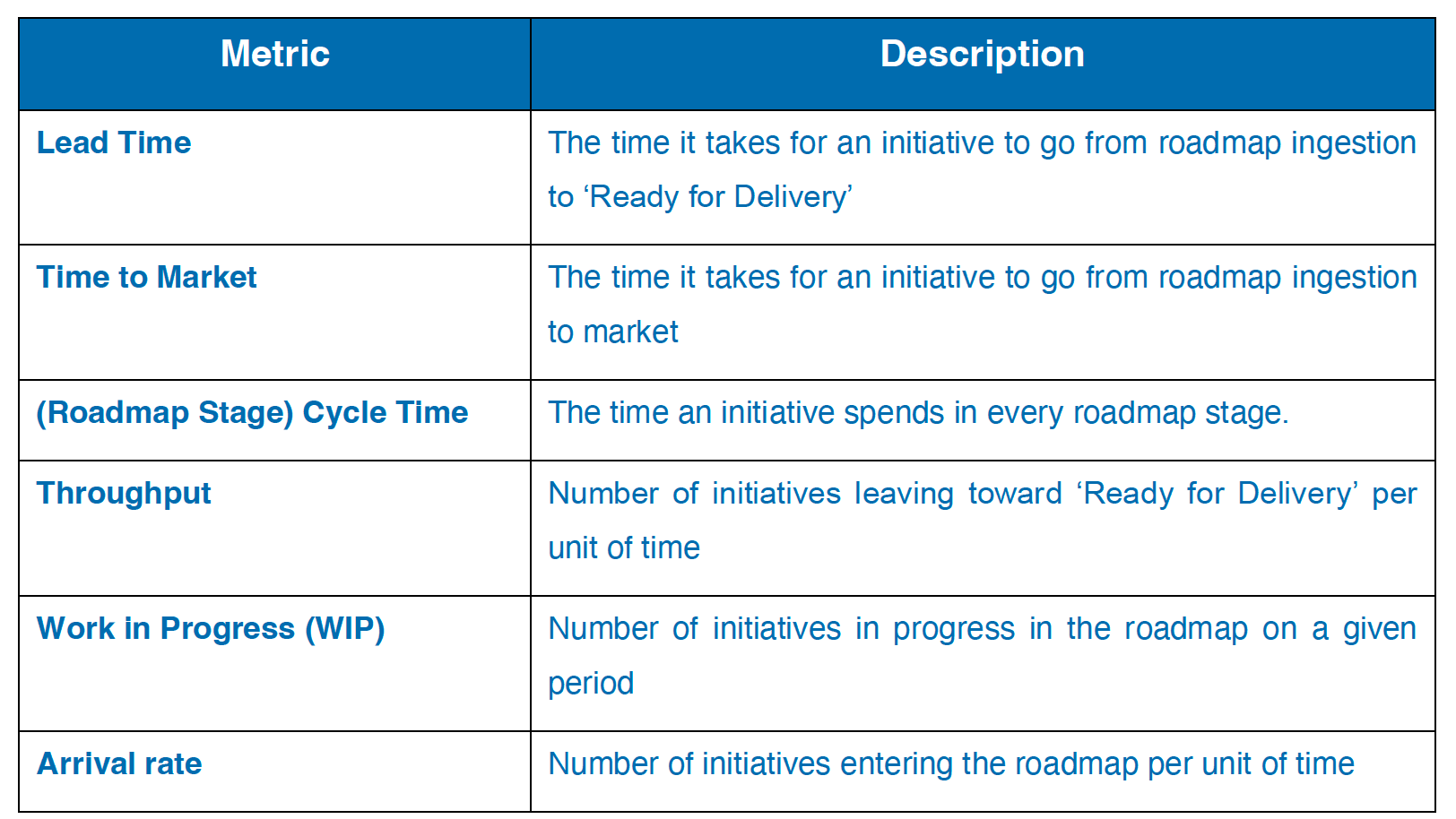
Governance metrics
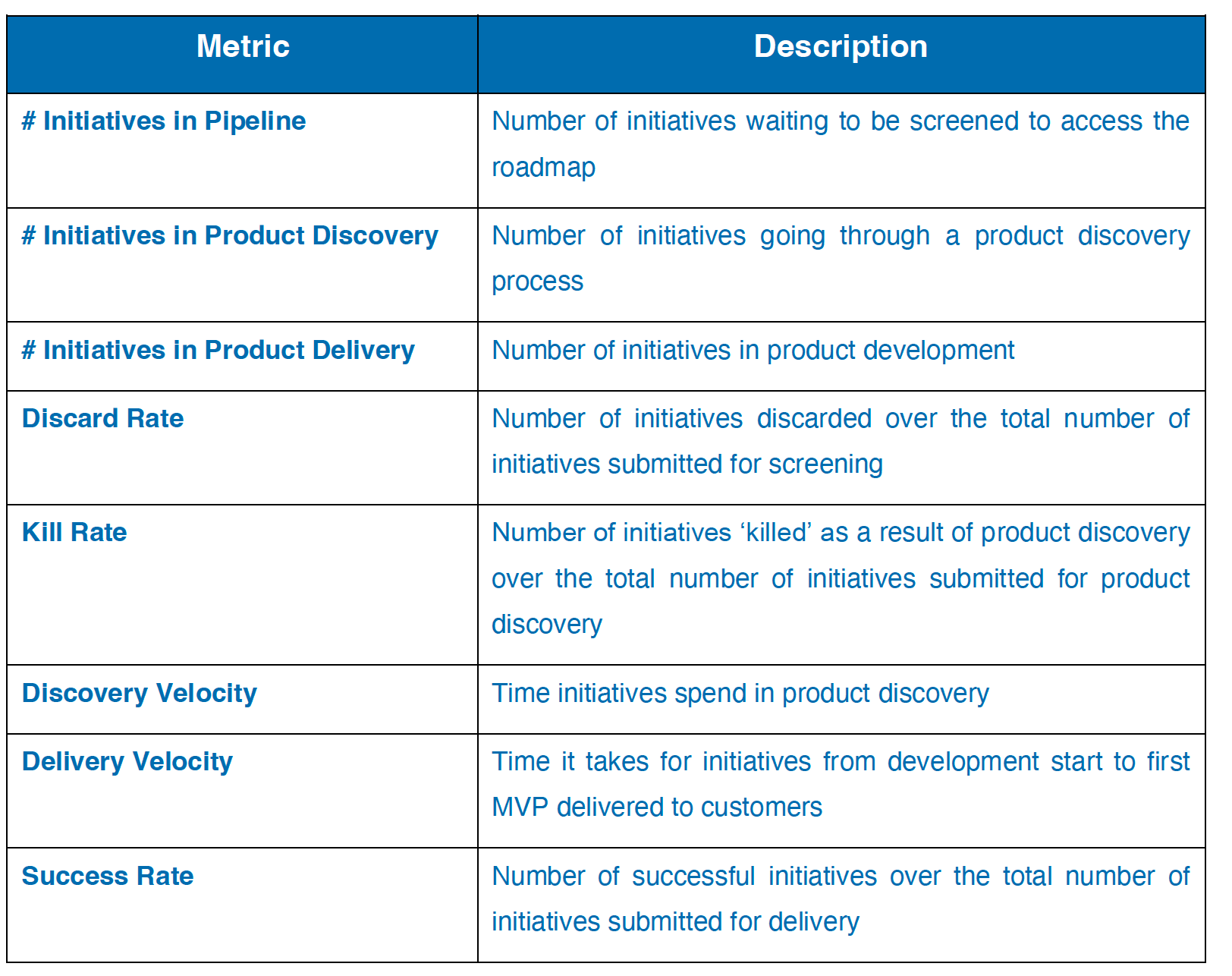
Book with highlights
(can’t be shared)
Linking
- Inspired by Gerard Chiva in his book Product Roadmapping
- [[Product Roadmaps Relaunched]]
- [[Midjourney V6 prompts examples/030-039 Areas/32 Zettelkasten/Literature notes/Matter/How to Create a Product Roadmap That Everyone Can Understand!]]
- Roadmapping Approach described